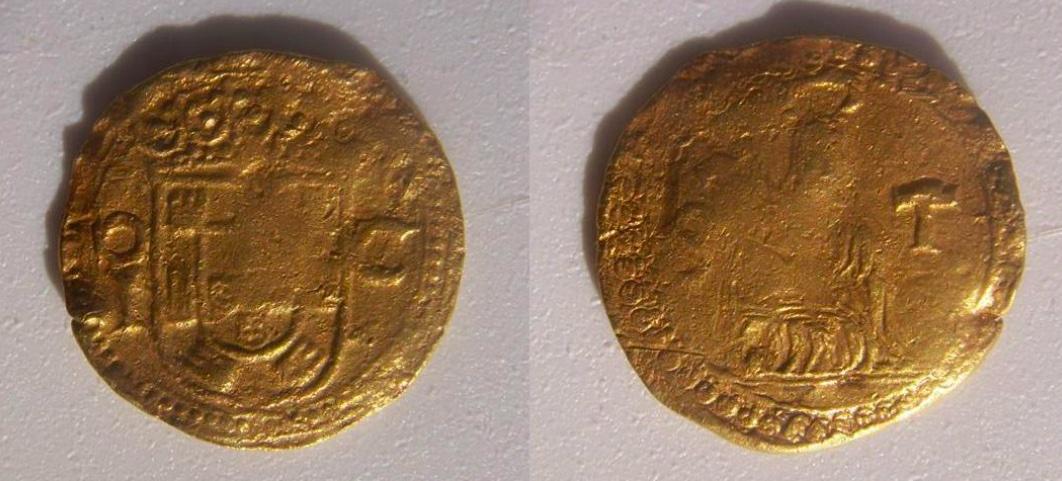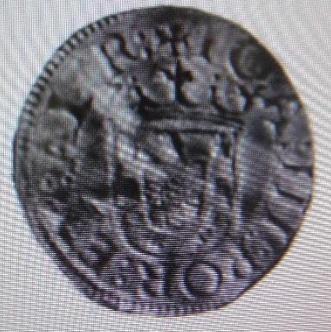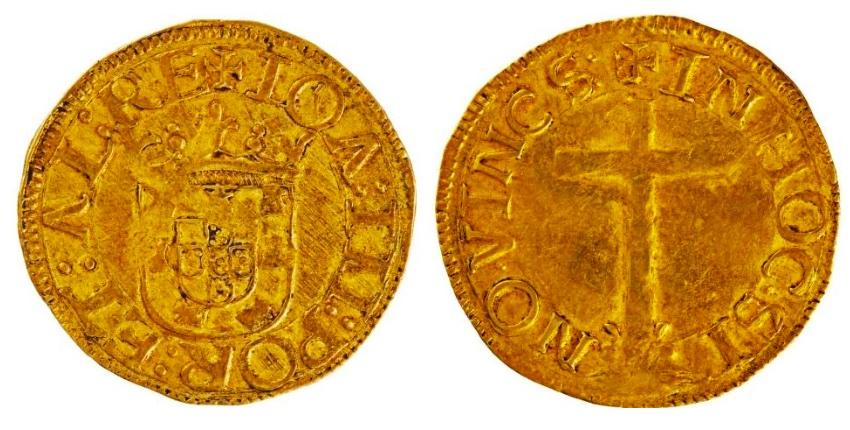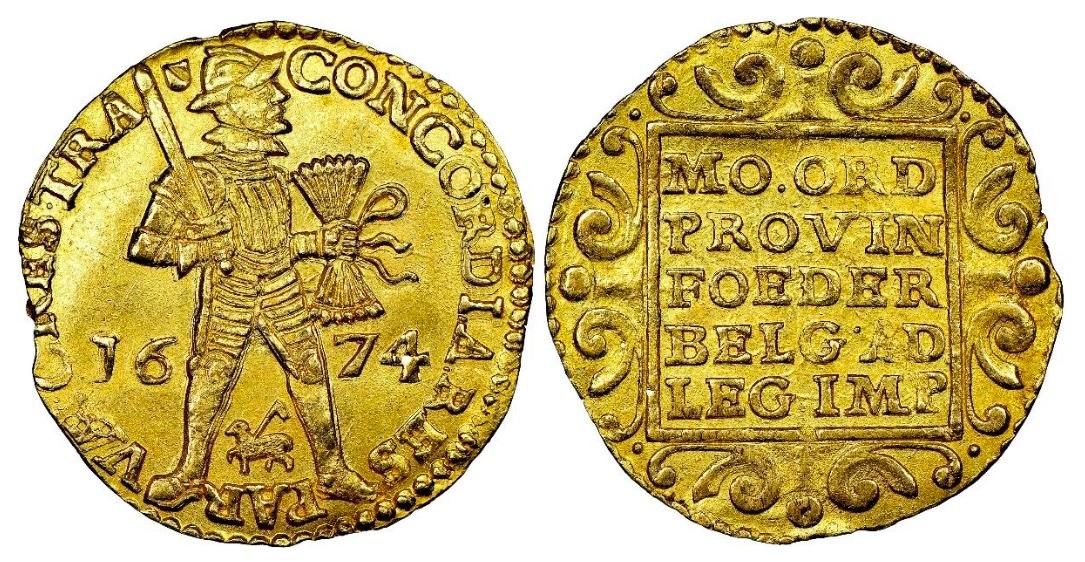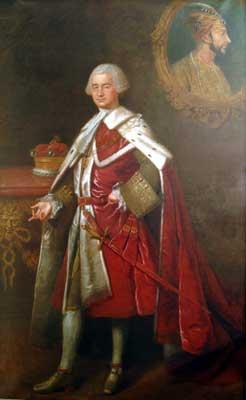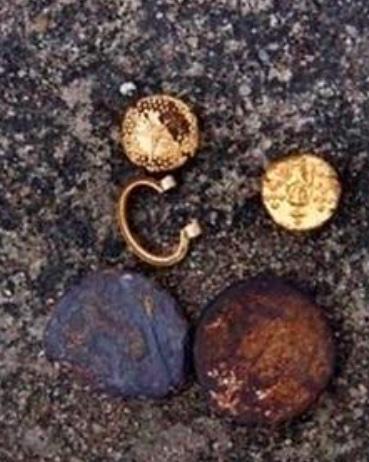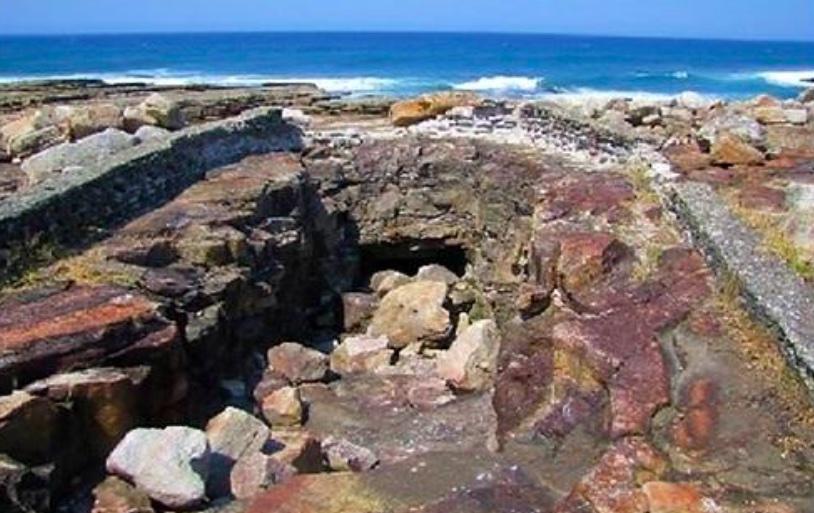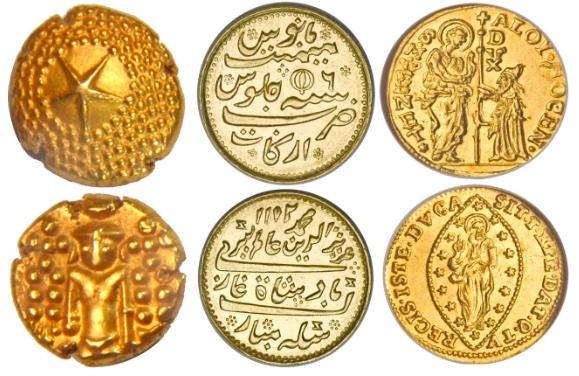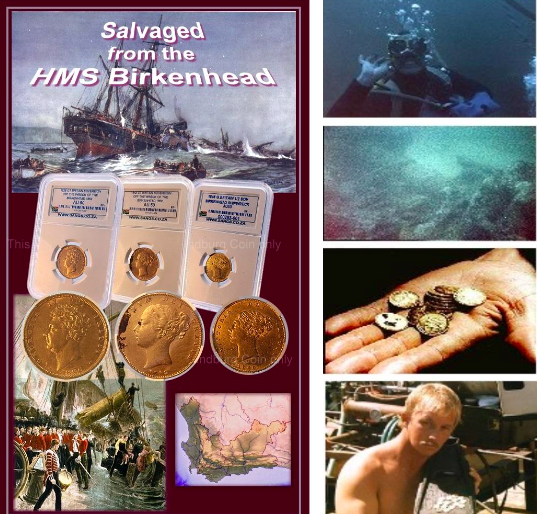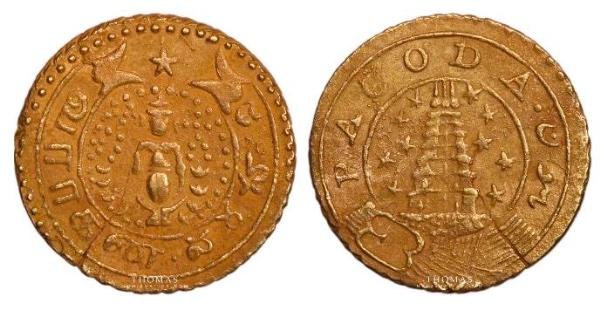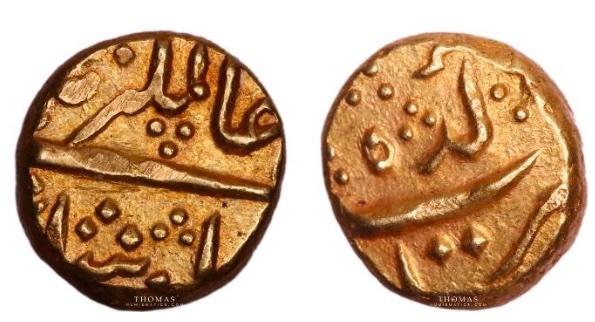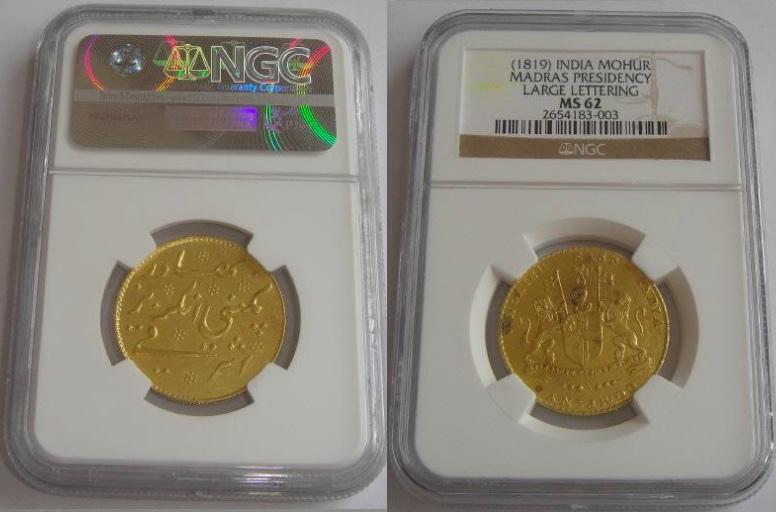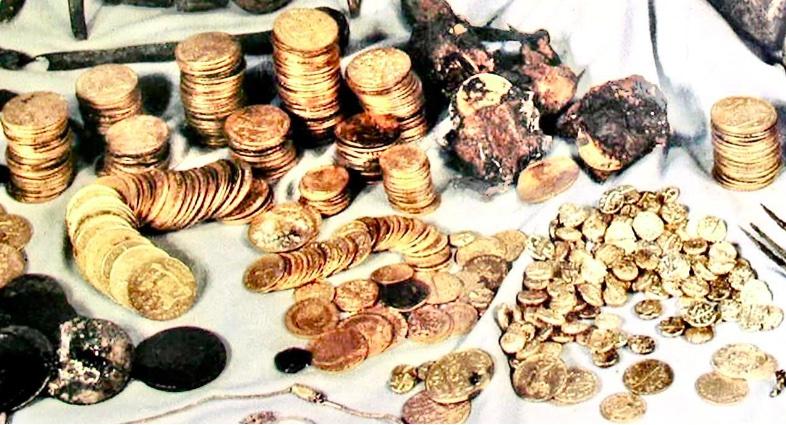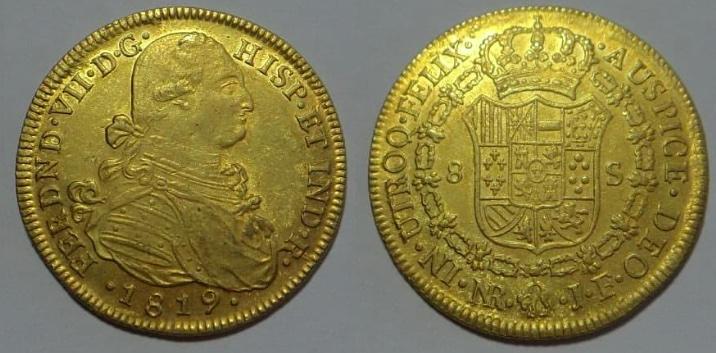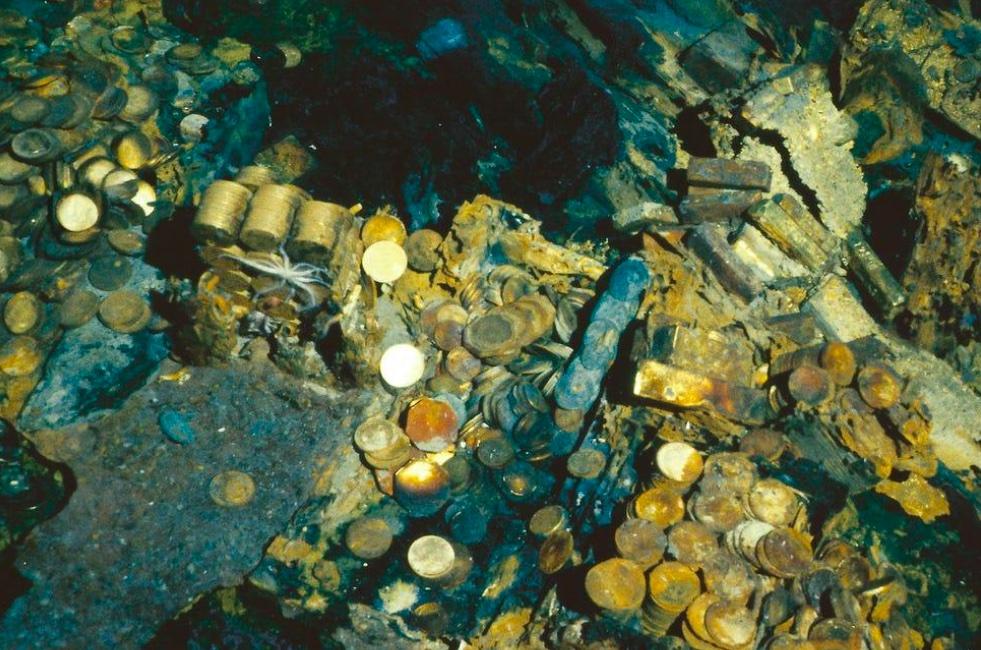
Disclaimer: Any views expressed by individuals and organisations are their own and do not in any way represent the views of The Heritage Portal. If you find any mistakes or historical inaccuracies, please contact the editor.
South Africa has an exceptionally long coastline stretching over 3000 kilometers from the desert border with Namibia on the Atlantic coast southwards around the tip of Africa and then north to the border of subtropical Mozambique on the Indian Ocean. As would be expected, many a ship has foundered in our waters over the more than 500 years since the Portuguese navigator Bartolomeo Diaz first rounded the Cape in 1488.
However, only a very few of these could be said to be true “treasure ships” carrying large amounts of coins struck in precious metals with examples like the Joanna (1682) and Merestein (1702) few and far between. And even these ships seldom carried large amounts of gold coins, unlike legendary ships sunk in foreign waters like the Nuestra Senora De Atocha and the SS Central America that foundered along the American coastline with the last mentioned carrying gold then valued (in 1857) at approximately US$8 000 000. The gold value today in South African currency would be approximately be R14.5 billion with the numismatic value much more.
Gold coins recovered from shipwrecks in South African waters were in most cases personal possessions carried by rich passengers and officers on the ships, although a ship like the Birkenhead (1852) was rumored to have had a military payroll of £240,000 in gold coins weighing about three tons on board. It is thought that the gold coins were intended as payment to soldiers fighting in the Eastern Cape boarder wars.
Two gold coins from our earliest shipwrecks
It is hard to believe that the first Portuguese shipwreck off South Africa’s east coast already occurred a century before Jan van Riebeeck landed at the Cape. This was the sinking of the large and richly laden Portuguese ship, the Sao Joao, off Port Edward in 1552. Barely two years later a second shipwreck took place, that of the Sao Bento at the Msikaba River mouth, about mid-way between Port St Johns and Port Edward. (It must be noted that even older local shipwrecks are recorded, but their remains have never been located.)
Regarding the Sao Joao shipwreck (1552), an undated article was written by Filipe Castro, Chase Oswald, and Paulo Jorge Rodrigues and published on the website of the Nautical Archaeology Digital Library.
A picture of a gold coin is shown in the article with the caption “Gold coin supposedly found on the S. João shipwreck site”.
Gold Pardau (360 Reis) of Portuguese India struck between 1521 and 1557 during the reign of King Joao (John) III. The letters “ST” refer to Saint Thomas.
A study on the Sao Bento shipwreck (1554) was done by Chris Auret and Tim Maggs in 1982, and published in the Annals of the Natal Museum. It states that only one coin is known from the site and that it was found on the island wedged between two rocks near low water. It was a gold Cruzado showing the Royal Portuguese Coat of Arms surrounded by the legend lOA 111 POR FT AL R (John III King of Portugal and the Algarve) with, on the reverse, a cross and the words In hoc signo vincit. John III reigned from 1521 to 1557, so the coin shows that the wreck could not be earlier than 1521.
The coin mentioned in the article
An example of such a coin, but with small differences in the lettering
Dutch shipwrecks
One of South Africa’s most well-known shipwrecks that yielded large amounts of coins was the Dutch East Indiaman, the Merenstein (also spelled Merestein and Merenstijn) that hit the reefs on 3 April 1702 on the southwest point of Jutten Island, near Saldanha on our West Coast. Only 99 of the 200 people aboard the Merenstein survived. On board the Merestein were several chests of silver coins for trade in the East Indies, for which immediate salvage plans were undertaken. But Jutten Island was difficult to dive in those days, and all attempts were abandoned until modern times. The wreck was re-found and salvaged in the early 1970s by local divers, yielding almost exclusively Dutch silver Ducatoons from the 1600s. The number of coins found in the 1970s was around 15 000 and is believed to be nowhere near all of the treasure that was lost.
However, according to Malcolm Turner in his Shipwrecks & Salvage in South Africa (1988:114) “… a few gold Ducats were found, but not in great quantities.” These coins we believe, were not intended for trade as were the silver specie on board, but were privately owned by individuals on the ship. As far as we know, none of these gold Ducats from the Merenstein have ever been recorded for sale on the open market.
A gold Ducat from Utrecht dated 1674 (Numista)
Other Dutch ships that were wrecked on our coast that carried silver specie in the late 1600s and 1700s, like the Reigersdaal, Het Huis Te Kraaiestein, Standvastigheid, Rotterdam and Zoetigheid, possibly carried a limited number of gold coins, but none were recorded as being salvaged.
In a marine archeological doctoral thesis by Jonathan Sharfman (2017:9) he notes that gold coins were recovered from the Oosterland, a Dutch East Indiaman that was shipwrecked on 24 May 1695, a few hundred meters from the entrance to the Milnerton lagoon, at the mouth of the Salt River in Table Bay. It is not recorded what kind of coins these were. It is interesting to note that the Oosterland was one of ships that brought the French Huguenots to the Cape in 1688, the author’s forefathers included.
English shipwrecks
The first English East Indiaman lost on the South African coast was the Joanna (also spelled Johanna) when she was wrecked on 8 June 1682 at Cape Agulhas near the southernmost point in Africa. On board was a vast treasure in silver bullion and pieces-of-eight contained in 70 chests. At the time over 9000 coins were salvaged and delivered to Governor Simon van der Stel. Three hundred years later, in 1982, treasure hunters salvaged a further 23 000 coins. Some sources state that a considerable amount of gold was on board. In his book South African Beachcomber, Lawrence G. Green (1958:99) also says that crew members saved some of the gold coins, but much of it still lies beneath the waves.
However, we could not find records of any gold coins recovered from the wreck.
An English ship that indeed carried gold coins was the Doddington, an East Indiaman of the British East India Company. On her third trip she was sailing to India when she was wrecked on 17 July 1755 at Bird Island in Algoa Bay, near present-day Port Elizabeth. The ship was carrying a chest with over 650 ounces of gold coins belonging to Baron Robert Clive, also known as Clive of India. It is estimated that the gold was then worth £33,000 (equivalent to £5,500,000 in 2021). A large part of the hoard was apparently looted by modern day treasure hunters.
Clive of India (Wikipedia)
The Grosvenor, an East Indiaman, was wrecked on 4 August 1782 on the Pondoland coast of South Africa. The association of the Grosvenor with treasure goes back a long time. Some believed the ship carried large quantities of gold, silver and precious stones and even the so-called Peacock Throne, the jewelled seat of the Mughal Emperors of India. In 1880, an article appeared in the Natal Mercantile Advertiser that mentioned that numerous gold and silver coins had been picked up on the beach near the wreck.
Gold Pagodas, silver coins and a gold swivel from the Grosvenor (Geoff Spiby)
The entrance to the tunnel that treasure hunter Sidney Turner dug in the late 1800s to reach the ship, can still be seen today (Mark Heywood)
A website (coxonclub.com) maintained by family members of the ship’s captain, John Coxon, claims that there were 2 600 000 gold coins on board. This we believe is a largely exaggerated and an unsubstantiated number of coins.
A study up to 2013 on artifacts found on the Grosvenor by S. Valentine of the East London Museum was published and comments “Several hundred gold artefacts were recovered. These included a pocket watch, several gold buckles as well as personal jewellery. But most were gold coins; star pagodas, Venetian ducats and Indian mohurs”.
The following pictures shows gold coins, struck in the late 1700s, similar to those found on the Grosvenor.
From left to right: A Star Pagoda and a Mohur, both from India, and a Venetian Ducat, also called a Zecchino. (Numista)
As we have stated earlier, another gold carrying English ship was the troop carrier Birkenhead that was rumored to have had a military payroll of £240,000 in gold coins, weighing about three tons, on board. It was apparently stored secretly in the powder-room before its final voyage. Shortly before 02:00 on 26 February 1852, the ship struck an uncharted rock that lies near Danger Point (near Gansbaai in the Western Cape). Only 193 of the estimated 643 people on board survived, some taken by sharks while trying to swim ashore.
Many salvaged attempts were made throughout the years, and in the period 1986 to 1988, a combined archaeological and salvage excavation was carried out by Aqua Exploration, Depth Recovery Unit and Pentow Marine Salvage Company. A report reads “Only a few gold coins were recovered, which appear to have been the possessions of the passengers and crew.”
Another report by Birkenhead.com claims that a team “led by Dr. Allan Kayle salvaged a few hundred gold coins in the mid and late eighties but it was felt that these coins were obviously personal belongings and did not make out part of the legendary treasure. The mother-load thus still eludes all”.
Some of the coins (British Sovereigns and Half Sovereigns) recovered were later encapsulated by a local grading company and sold in capsules certifying that they were shipwreck coins from the Birkenhead.
Picture left: Randcoin. Pictures right from top to bottom: The first coin found by Pierre Joubert on the 1st of March 1986, the Birkenhead Paddlewheel, first gold coins found by the Depth Recovery Unit, Jimmy Herbert posing with the first few gold coins found by Konrad Stutterheim and Pierre Joubert on the 1st of March 1986. They were diving from the ship Causeway Adventurer for the salvage company, Depth Recovery Unit. (Birkenhead.com)
If the ship indeed carried £240,000 in gold coins, its value today would be almost a billion rand. However, Malcolm Turner doubts the rumor by saying that the salvage rights to the ship were, almost immediately after the tragedy happened, transferred to a private company. This would not have happened if there was indeed a fortune on board belonging to the British government.
Another English ship from which gold coins were salvaged, and some examples also slabbed in holders and certified, is the Fame, a British East Indiaman, built in Calcutta. On June 14th 1822, while on her return voyage from Madras to England with a cargo of sundries and passengers, she was thrown on the rocks at Sea Point, Cape Town, by a strong North-Westerly storm, off Table Bay. The ship fell into oblivion until 1965 when the wreck was found and salvaged by the brothers George and James Bell.
Gold Indian Pagodas recovered from the Fame - Madras Presidency (Thomas Numismatics)
Gold Indian Pagodas recovered from the Fame - Mughal Empire (Thomas Numismatics)
A Gold Mohur from the Fame, certified by NGC but not stating that it comes from the ship from which it was indeed salvaged and originally certified by Dr. Frank Mitchell, a past President of the South African Numismatic Society. The NGC-graded coin was sold by the author 4 years ago for R76 805.00 as it was in unique mint state condition.
According to Malcolm Turner in his Shipwrecks & Salvage in South Africa (1988:83), the following gold coins were recovered by the Bell brothers:
- British: guineas, one-third guineas, sovereigns and half sovereigns
- English East India Company: mohurs, half mohurs, one third mohurs, one-quarter mohurs
- Madras: two pagodas, one pagodas
- Hindustani: one-quarter mohurs, one-eight mohurs
- Murshidabad: one mohurs, half mohurs
- Arcot: one mohurs
- Mysore: one pagodas, one fanams
- Travancore: one fanams
Gold coins recovered from the Fame
The Arniston, a British East Indiaman was wrecked on 30 May 1815 during a storm at Waenhuiskrans, near Cape Agulhas, South Africa, with the loss of 372 lives with only six persons surviving. According to explorio.com … “Of the 733 groups of artefacts recovered, the bulk was kept together as a collection and donated to the Shipwreck Museum in Bredasdorp. Amongst these, there were no less than 14 gold jewellery items”.
Sadly however, in January 2012, “…thieves targeted the Arniston gold display. Tragically, they were able to walk off with almost the entire gold exhibit, leaving only the gold chain (#3), gold snake earring (#6) and the sword handle (#7)”. It is rumored that Indian gold coins, some similar to those recovered from the Fame, were also salvaged from the Arniston, but we have no conclusive proof of this.
An unknown wreck
Approximately 3 years ago, a Cape Town coin dealer was approached by an elderly man who had some gold coins to sell. He claimed that he salvaged the coins in the early 1990s from an old wreck near Noordhoek, Cape Town.
He had approximately 20 of these coins to sell being Spanish gold 8-Escudos. These are large issues, almost the size of a 1 OZ Krugerrand. The coins date from the late 1700s to 1819 being the latest date. The latter coin (shown below) appears to be in uncirculated condition. This indicates that the ship was most probably wrecked in the early 1820s.
1819 Spanish Gold 8-Escudo
We have scanned Malcolm Turner’s book on South African shipwrecks, but could not identify any shipwreck that would fit the bill. However, as his book was published in 1988 and the coins were apparently found in the early 1990s, the wreck might have been discovered during the interim period.
Just before this paper was published, we received news from Mike Klee, a scuba diver from Port Elizabeth, that the ship was most probably the Spanish vessel Sabina that ran ashore at Cape Recife in the early hours of the morning of 7 August 1842 while trying to make Algoa Bay in a leaky condition. The spot was off Noordhoek, Port Elizabeth in the Indian Ocean and not Noordhoek, Cape Town, probably causing the original confusion with the provenance. A report (Porter (1978) - states “The ship was bound from Manila to Spain and was reputed to have a valuable cargo on board. Of the 65 people on board twenty were drowned, among them a Spanish grandee, Don Francisco Monson and his wife. It is said that they had on board with them their valuable family plate”.
The American numismatic firm, Daniel Frank Sedwick, LLC, sold some of these gold 8 escudos from the Sabina wreck in their Treasure Auction 27 of 27-29 May 2020.
Although not strictly found in South African waters, we thought the following would be of interest as a postscript to this paper.
The Bom Jesus
The Orange River forms the border between South Africa and its northerly neighbor Namibia. Just across the river, 8 kilometers from the northern bank of the river mouth, lies the gem-diamond producing town of Oranjemund.
In 2008, the remains of an old ship was found during diamond excavations nearby. Archeologists later identified the ship as the Bom Jesus, an Indiaman that set sail from Lisbon, Portugal on Friday March 7, 1533, and was never heard off again. Today, the Bom Jesus is the oldest known and most valuable shipwreck ever discovered off the Western coast of Sub-Saharan Africa. According to the Namibian, over 2000 gold coins were retrieved from the site including some extremely scarce issues.
According to an article in Coin World (2016), an estimated 90 percent of the coins are Spanish Excelentes of King Ferdinand and Queen Isabella. These coins are denominated as 1-, 2- and 4-excelente pieces and were issued from 1476 to 1516. The 1-excelente coin contains. 1109 ounce of gold, and multiples contain multiples of that amount. The coins, however, have been valued at far above their precious metal content for some time.
Gold Coins of the World by Arthur L. and Ira S. Friedberg (2009) valued a common 1-excelente coin at about $1,500, a common 2-excelente coin at $3,500 and a common 4-excelente coin at $15,000. For perspective, those prices were based on gold at $850 an ounce.
About 8 percent of the coins were Portugueses, gold coins from the reign of King Joao III. It is said that these were the most valuable coins in Europe at the time they were issued. The remainder of the gold coins were from Venice and Hungary.
Main image: According to USA Today, the team that discovered the SS Central America in 1988, nicknamed this area of the Atlantic Ocean seabed filled with some of the ship’s sunken treasure “The Garden of Gold”.
Pierre Nortje is the secretary of the Western Cape Numismatic Society
Comments will load below. If for any reason none appear click here for some troubleshooting tips. If you would like to post a comment and need instructions click here.

